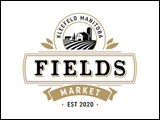One of the heritage buildings I especially enjoy visiting at Mennonite Heritage Village (MHV) is the Barkfield School. It’s the public school located just west of the Windmill. The large windows, wooden desks and floors, large blackboard, and displayed textbooks all remind me of the Burwalde School between Winkler and Morden where I attended classes from grades one through eight.
We normally had about 30 students in the school. I spent all those years in a grade with two other boys. In fact, during the years I attended the school the boys generally outnumbered the girls, which was fine with me because I grew up in a home with two sisters and no brothers, and most of my cousins who were close to my age were also girls.
The Burwalde School was the place where I learned to read, write and do arithmetic. I learned about English grammar as well as some German grammar. I learned about health and geography, history and music. This was my foundation for much future learning.
To get my schoolwork done, I needed to learn to focus on my assignment and not be distracted by the other activities in the classroom. This was not always easy because there were usually eight grades in the room, and the teacher was addressing at least one of these grades all the time. The room was rarely silent.
I learned to enjoy stories and reading. In the back of the classroom there was a library. By today’s standards it was very small, but it had a variety of interesting books including at least one about the Boxcar Children. I may have read that one more than once. Our teacher would usually read to us after lunch, and because we had such a high percentage of boys in the class, we were often able to convince the teacher to read Hardy Boy books.
On the school yard I learned a lot about sports. I learned to play softball, soccer, football and hockey. Most winters one of the local farmers would level a patch of snow on the school yard, haul truckloads of water with his three-ton truck, and flood a patch of ice. When it snowed he would bring his snow blower and clear the snow off the ice. On this makeshift rink we learned to play hockey at recess. Fortunately it was not highly competitive hockey, because most of us had no safety gear.
Softball was our school’s competitive sport, where we would regularly play against five other country schools. Often on a Friday afternoon our teacher would borrow a farm truck from one of the farmers so that the entire student body could climb into the truck box and ride several miles to the next school for a ball game. This is where I learned about teamwork and sportsmanship and how to win and lose. I guess I didn’t learn these lessons particularly well, because I find I still don’t really enjoy losing.
At Christmas time, our school would prepare a program for the broader community. This involved learning songs, poems and individual parts in short plays or dramas. This was my first introduction to choir participation and public speaking. I recall that on one occasion we even did a Low-German play.
Beyond these numerous educational opportunities, I also learned how to make snow forts and tunnels, hunt gophers on the school yard, make whistles from Caragana seed pods, and play board games inside at recess on cold or rainy days.
Not all the things we learned have been critical to ensuring a successful and meaningful adult life, but in many ways the experiences of those eight years in the Burwalde School played a major role in shaping who I am today. Curiously, although I don’t remember ever being excited about going to school in those years, my memories of school experiences are largely positive.
I now enjoy my visits to MHV’s Barkfield School because of the stories from my past which this school brings to mind. We at MHV are interested in hearing your own stories about places that are meaningful to you, particularly stories that are represented by an artifact or heritage building. What can you share with us?



